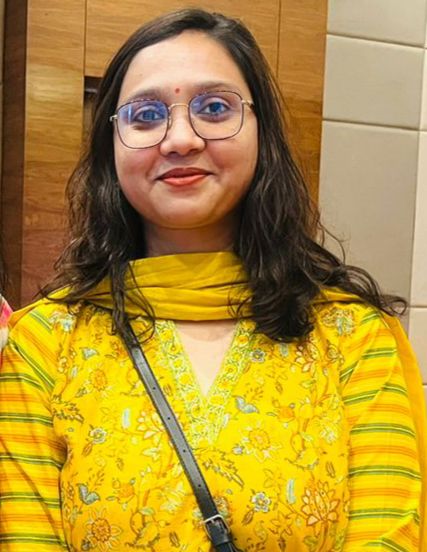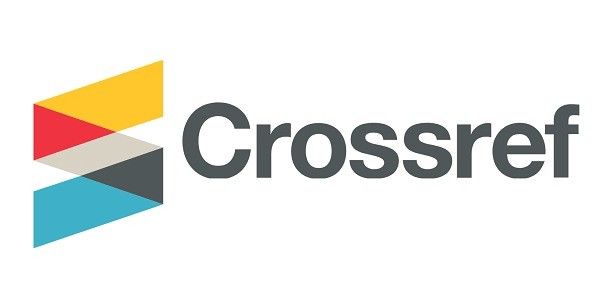Use of OCT for Glaucoma Specialists
Downloads
Published
DOI:
https://doi.org/10.56692/upjo.2025130103Keywords:
Glaucoma, Optical coherence tomography, Retinal nerve fiber layer analysis, Anterior segment OCT.Dimensions Badge
Issue
Section
License

This work is licensed under a Creative Commons Attribution 4.0 International License.
© Author, Open Access. This article is licensed under a CC Attribution 4.0 License, which permits use, sharing, adaptation, distribution and reproduction in any medium or format, as long as you give appropriate credit to the original author(s) and the source, provide a link to the Creative Commons licence, and indicate if changes were made. The images or other third party material in this article are included in the article’s Creative Commons licence, unless indicated otherwise in a credit line to the material. If material is not included in the article’s Creative Commons licence and your intended use is not permitted by statutory regulation or exceeds the permitted use, you will need to obtain permission directly from the copyright holder. To view a copy of this licence, visit https://creativecommons.org/licenses/byncsa/4.0/.
Primary open-angle glaucoma (POAG) is a chronic and progressive optic neuropathy characterized by retinal nerve fiber layer thickness (RNFLT) loss and neuro-retinal rim tissue thinning with progressive visual field (VF) damage.Abstract
The basic pathology is the progressive loss of retinal ganglion cells (RGCs), especially the apoptosis of the axons of ganglion cells, followed by peripapillary retinal nerve fiber layer (RNFL) defects. Glaucoma predominantly affects the inner macular retinal layers: the macular RNFL (m RNFL), ganglion cell layer (GCL) and inner plexiform layer (IPL), where ganglion cell complex (GCC) consists of RNFL, GCL and IPL thickness.
The ability to detect structural loss is fundamental in the diagnosis and management of glaucoma. While glaucomatous structural damage can be assessed clinically by examining the optic nerve head (ONH) and peripapillary retinal nerve fiber layer (RNFL), the introduction of ocular imaging modalities has supplemented the clinical diagnosis and hence it is possible to either slow or prevent the progression of vision loss by adequate early treatment and management of glaucoma.
In recent years, along with visual fields, optical coherence tomography (OCT) has become an important modality for the early diagnosis of glaucoma disease and the monitoring and analysis of glaucoma patients.
How to Cite
Downloads
Most read articles by the same author(s)
- Yogika Shimer, Shalini Mohan, Combined Hamartoma of Retina and Retinal Pigment Epithelium: A Case Report , UP Journal of Ophthalmology: Vol. 12 No. 02 (2024): UP Journal of Ophthalmology
- Shalini Mohan, Ankita Singh, Myopia Management - A Shifting Paradigm , UP Journal of Ophthalmology: Vol. 13 No. 01 (2025): UP Journal of Ophthalmology
- Mukesh Prakash, Rohit Gupta, Ankita Singh, Namrata Patel, Aditi Saroj, Shalini Mohan, A Prospective Study on the Impact of Phacoemulsification on Corneal Endothelial Cell Count and Morphology in Different Grades of Nucleus , UP Journal of Ophthalmology: Vol. 13 No. 01 (2025): UP Journal of Ophthalmology
- Shefali Pandey, Shalini Mohan, Namrata Patel, A Rare Case of Leber’s Hereditary Optic Neuropathy , UP Journal of Ophthalmology: Vol. 13 No. 01 (2025): UP Journal of Ophthalmology
Similar Articles
- Malvika Singh, Akshay Mohan, Sandeep Saxena, Pathophysiological Changes of Retinal Inner Layers in Diabetic Macular Edema , UP Journal of Ophthalmology: Vol. 9 No. 01 (2021): UP JOURNAL OF OPHTHALMOLOGY
- Vartika Yadav, Sapan Jaiswal, Tahir Husain, Prevalence and Clinical Profile of Posterior Vitreous Detachment in Myopia : A Cross:Sectional Study , UP Journal of Ophthalmology: Vol. 13 No. 01 (2025): UP Journal of Ophthalmology
- Deepansh Garg, Lokesh Kumar Singh, Alka Gupta, Jaishree Dwivedi, Priyanka Gusain, Priyank Garg, Correlation of Peripapillary Vessel Density by OCTA with Visual Field Defects in Primary Open-Angle Glaucoma: A Cross-Sectional Study , UP Journal of Ophthalmology: Vol. 13 No. 02 (2025): UP Journal of Ophthalmology
- Dcepak Soni, Diksha Prakash, On Prakash Singh Maurya, SuryaKumar Singh, Analysis of Retinal Nerve Fibre Layer Thickness with HtrAlc andBlood sugar levels in Type 2 Diabetes Mellitus patients without clinical diabetic retinopathy , UP Journal of Ophthalmology: Vol. 5 No. 01 (2017): UP JOURNAL OF OPHTHALMOLOGY
- Swati Singh, Harsh Kumar, Harish H S, Surbi Taneja, Management of Late Onset Sequential Pseudophakic Malignant Glaucoma: A Case Report and Review of Literature , UP Journal of Ophthalmology: Vol. 11 No. 03 (2023): UP JOURNAL OF OPHTHALMOLOGY
- Shalini Mohan, Jayati Pandey, Anchal Tripathi, Ashok K. Verma, Optic Nerve Sheath Diameter in Glaucoma Patients and its Correlation with Intraocular Pressure , UP Journal of Ophthalmology: Vol. 10 No. 01 (2022): UP JOURNAL OF OPHTHALMOLOGY
- Shalini Mohan, EDITORIAL , UP Journal of Ophthalmology: Vol. 11 No. 01 (2023): UP JOURNAL OF OPHTHALMOLOGY
- Yogika Shimer, Shalini Mohan, Combined Hamartoma of Retina and Retinal Pigment Epithelium: A Case Report , UP Journal of Ophthalmology: Vol. 12 No. 02 (2024): UP Journal of Ophthalmology
- Akshay Mohan, Upsham Goel, Malvika Singh, Somnath De, Sandeep Saxena, OCT Angiography : Basic Concepts , UP Journal of Ophthalmology: Vol. 8 No. 03 (2020): UP JOURNAL OF OPHTHALMOLOGY
- Rajat M Srivastava, Siddharth Agrawal, Recent updates on medical management of Glaucoma. , UP Journal of Ophthalmology: Vol. 11 No. 02 (2023): UP JOURNAL OF OPHTHALMOLOGY
You may also start an advanced similarity search for this article.







